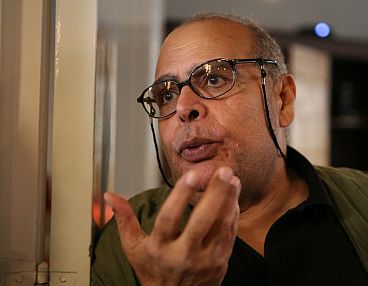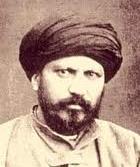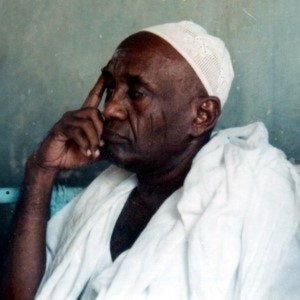
It is indisputable that the collision of the Arab world's conservative Islamic heritage with Western colonial civilisation over the past two centuries, and the exposure of its humiliating status vis-à-vis the tremendous progress in modern technologies of transport and communication or the achievements of the advanced nations in the world, specifically Western Europe and North America – have spawned a cultural tension that is yet to be resolved.
ONE RESULT OF THIS violent cultural tremor was the splitting of contemporary Arab culture – in all of its societies without exception – into two well-nigh conflicting halves. The winds of the Arab Spring have unabashedly exposed this recently, particularly in the ongoing struggle in those lands over the identity of the state.
Noticeable in the quest for a solution is how the two mutually conflicting parties are nevertheless at one in tracing the extent of the weakness, humiliation and cultural backwardness that for centuries has beset the region. Yet at the same time they strongly differ in their diagnosis of the symptoms leading to the ailment, or the appropriate cure for it. While the Salafist party points its finger (and from time to time its bombs) at the West primarily for its having infected the region with ‘sick genes’ and for having subsequently empowered its cronies among their own children to embed it and propagate it through their own efforts – another party sees the only effective cure for it to be itself manufactured in the West. If, from the point of view of the Salafists, the only solution is to eliminate the risk of the disease by returning to some original Islamic ‘roots’, or the ‘true faith’ in current parlance, the ‘Revivalists’ conversely see that there is no alternative to importing Western achievements at all levels, and embedding these things, to a greater or lesser extent, within the Islamic environment.
So it could be said that the real nature of the dispute between the two parties – the Salafist and the Revivalist – is focused primarily on whether or not there is anything to be gained from adopting the features of Western modernity and progress. The Revivalists say ‘yes’, the Salafists ‘no’.
With regard to the standpoint of the Revivalists, the striking thing is that it they are still working to cure the problem from the same starting point of authority that the Salafists themselves use – religious authority – though steering it in a different direction. The Revivalists, as implied by the word itself, are not attempting to ‘create’ some new edifice capable of accommodating, dealing with or absorbing the methodologies of Western modernity according to the circumstances and conditions of the new environment. On the contrary, they are convinced in the capacity of the broad edifice of Islam to accommodate, represent and absorb these new methodologies. Hence this edifice is to constitute the train of ‘Renaissance,’ even if some extremists at times have, and still do, accuse it of being itself the cause of Arab backwardness. There is no way that a Renaissance can be effected in Islam except from within the womb of the Islamic faith itself, and perhaps this is how Muslim reformers and revivalists conceive it.
Who has accorded this supreme status to religion, and why?
It is from this intellectual starting point of renewal that Muslim reformers over the course of the last two centuries have been operating in their various schools of thought. In the limited space available I shall just mention three of these schools specifically:
1) The ‘reconciling’ school whose most prominent proponents were Shaykh Jamāl al-Dīn al-Afghānī (1838-97) and Muhammad ‘Abduh (1849-1905). This school conceded the reality of western material superiority over the Muslims, but did not concede its religious, spiritual, ethical or humanitarian pre-eminence over them. It hence tended towards effecting a ‘reconciliation’ from the religious point of view between the virtues of the two worlds, whereby we should adopt that which is beneficial to us and leave aside that which is harmful. This reformist school – termed ‘intermediate’ – is to this day the currently recognised, prevailing, official school in operation.
2) The ‘interpretative’ (hermeneutic) school represented by the academic researcher Nasr Hāmid Abū Zayd (1943-2010). This is the most audacious school in the way it deals with the religious texts, in that it attempts to deconstruct the meaning of the text and reinterpret it in light of the real world and of modern innovation, so that they may remove the causes of conflict between them. It does not concede the eternity of the text nor, more precisely, its ancient historical meaning and validity for all times and places, as does the ‘reconciling’ school.
3) The Qur’ānic school, promoted by the Sudanese intellectual Muhammad Mahmud Taha (1909-1985) and the Egyptian Ahmad Subhi Mansour (1949 –). This school of thought demonstrates a particular awareness of the primitive, brutal and violent behaviour that is inconsistent with the spirit of the present age, but which nevertheless finds clear support in the religious texts, whether of the Qur’ān, the Sunna or the jurisprudential corpus. The school has consequently proceeded on a principle of the duty to rid all the religious texts of impurities stemming from bedouinism, hatred, discrimination and violence and so on, even if this were to mean annulling the entire ancient jurisprudential tradition and dispensing with the totality of prophetic hadith, and contenting itself with the Qur’ān alone. Some of its members have even called for ignoring all of the Madinan suras of a legislative nature, with all their hadd , and contenting oneself with the Meccan suras which bear a lenient, kerygmatic stamp.
Despite the obvious differences between these three reformist schools, in the end one certain fact unites them all – they each operate under the authority and the reference point of the ancient religious texts. None attempt to construct an independent edifice that is detached from them. All of them noticeably vie with each other in claiming ownership of this same ancient structure – Islam – on the pretext of repairing it and renewing it.
Freeing oneself from the dominion of religion does not necessarily mean dispensing with it
There is a pressing question that still has to be posed to these reformers and revivalists: what is it that justifies granting the Islamic faith alone a monopoly of authority over all the other institutions of the state? Why, for example, should the economy have to ask permission from religion as to whether interest on bank deposits is permissible or forbidden, irrespective of the clear economic benefits then it confers in all cases? Why should the legislator – despite the fact that he is the representative of the sovereign people – be unable to propose legislation that is ‘contrary to the rulings (or even the principles) of Islamic law’? Who has accorded this supreme status to religion, and why?

Suggested Reading
Unfortunately, what has escaped these reformers – whose sincerity and good intentions no one doubts – is that true reform cannot be achieved within the womb of a totalitarian theory or an autocratic practice, whether this be related to a religious text or to a social or political institution. What never occurred to them or to their reformist theories was that reform did not begin even in the West, or anywhere else, until after the institutions of society and the state had been freed from the dominion of the Church. Democracy did not take root until the authority of power was divided up and a balance maintained between the three branches of the legislative, the executive and the judicial, whereby no one of them could seek or practice any influence over the other or claim any entitlement to dominance.
The approach to reform, religious or otherwise, cannot be undertaken on an exclusive, totalitarian ‘either…or’ basis. Freeing oneself from the dominion of religion does not necessarily mean dispensing with it; it simply means escaping from its unwarranted comprehensiveness and arbitrariness, to a space of individuals and independent entities capable of symbiosis and mutual respect, under the rule of one law for all.
Main image: Nasr Hāmid Abū Zayd (1943-2010): deconstructed the meaning of the text and reinterpreted it in light of the real world and of modern innovation, so as to remove the causes of conflict between them.


